The northernmost tip of Norway is a barren, brutal cliff, a naked rock plunging into the sea from an island aptly called Magerøya – the Meagre Island.
The northernmost tip of Denmark is a beach.
What better way could be to illustrate the difference between our two countries, at least geologically? Norway is sturdy old bedrock. Denmark, on the other hand, came into existence when God, after creating Heaven and Earth and all that, found He had made a slight calculation mistake and had some leftover sand and gravel. He dumped it in the North Sea, and that became Denmark.
The story may not be entirely true, but Denmark consists solely of sand, gravel and chalk (Bornholm being the sole exception, and it is almost Swedish). And, where the Norwegian North Cape may look eternal, the northern tip of Denmark moves back and forth in a battle between the seas of Skagerak and Kattegat. I went there to have a look at some geology in action – and to eat smørrebrød and experience the famous light, which for many years attracted artists.
The first thing you notice in northern Denmark, is the wind. It is always there. Sometimes strong, sometimes gentle, but always reminding: “I am here, and I am powerful. Respect me”.
Together with the waves, the wind sculptured the northern tip of Denmark, and its material was sand. They create a low, rolling landscape of large dunes of sand, a characteristic landscape with its own Danish name: “Klitter”. Trees and streams hide in the small valleys between the dunes, while only dry, sharp grass cling to the tops. A landscape, which is soft and wild at the same time. It may look stable from one day to another, but from year to year, the sand dunes are always on the move, and they even bury houses on their way.
At the very northernmost tip, the dunes end in a wide beach, and a finger of sand, Grenen – “the Branch” – marks the border between the Skagerrak sea in the west, and Kattegat in the east. Caught in a battle between the currents of the two seas, Grenen moves back and forth through time, sometimes pointing north, sometimes more to the east. At any summer day, Grenen is probably the most crowded square meters of any beach in Denmark. The tractor bus Sandormen, “the Sand Worm” brings those too lazy to walk out, so they can make a selfie, being the northernmost Dane for a few seconds. But beware: the currents around Grenen are strong, swimmers are wise to go to other beaches!
Just three kilometers south of Skagen town is the most famous of the houses, which the sand has eaten through time: Den Tilsandede Kirke – “The Sanded Church”. Once, a large medieval church of wood stood here. Documented back to 1387, it served villages around. But slowly, the large sand dunes engulfed the church, until the parishers had to dig themselves into sand-drowned church to do service. Eventually, King Christian VII gave permission to abandon the church. Most of its interior was moved to the new church, and the wooden walls used for buildings. Only the white stone tower remained.
Today, the church tower stands in the middle of a forest park, and one may wonder what the fuzz was all about. But look at the ground: The trees, rough, low, sturdy pines, have their roots in sand. The forest is man-made, created from the 1890s, to stabilize the sand. In 1890, the railway reached Skagen, and around it thousands of trees were planted to keep the sand off the tracks.
Skagen before the railway was quite isolated. It did not even have a proper harbour, and horse carts followed the beaches. With sand dunes in the land behind and sand beaches in front, it housed a few hundred poor souls in houses, often built by driftwood or remains of the many ships that wrecked around Grenen.
With the railway came the artists. The famous Skagen Painters formed a colony of artists, crowding in the town’s only small hotel: Brøndums Hotel. Today, Skagen has a hotel on every corner, but Brøndums still goes strong, and their smørrebrød does as well. Try a Dyrlægens Natmad – “the Vet’s Night Food” – with liver paste, bacon, meat and fat. Very Danish!
The artists came for the light. A gentle soft light, which can only be described as extra…light! Because it reflects in the light sand? The Skagen Painters painted the landscape, the beaches, the idyllic village life – and the still hard life of the fishermen, and of those who were left behind when storms demanded their victims. Many of their paintings focus on the beaches: from sand flying in the rage of wild winter storms, to children playing on the sand in calm summer evenings.

The oldest “lighthouse” in Skagen: A fire was lit in the basket, and lifted up, so it could be seen from the sea.
May be those children picked up some rocks from the beach and wondered: where did they come from? Rocks that clearly do not come from Skagen. Rocks, which we now know are much older than Denmark. There are rhomb porphyry, a lava with white feldspar crystals, which must have come from somewhere in the Oslo area, because that is the only place in the northern hemisphere it exists. Other rocks look like really old, Precambrian, granite, from the border area between Norway and Sweden. And one actually looks like a mylonite, an extermely squeezed out rock formed in a shear zone, somewhere in the Precambrian basement or the old Caledonian mountains in Norway or Sweden.

Pebbles on the beach: a red, spotted rhomb porphyry in the lower center, and a piece of granite above it.
It would take more analysis to figure out exactly where these rocks come from, but clearly, they come from the north shore of Skagerak. How? These rocks are one of the many pieces of evidence for the ice age, for the glaciers, which from 25 to 13 thousand years ago covered the whole of Scandinavia. They ploughed southwards, carved out the Oslo fjord, and picked up rocks which floated with the icebergs, and then got dropped further south.
Thousands of years later, the pebble was found, and told the fascinating story to a child playing – or a geologist on an escape to our – geologically – younger neighbor in the south.
How to get there
The closest international airport to Skagen is Aalborg. Its international flights are somewhat limited; most tourists would probably fly via Copenhagen.
Stena Line has ferries to Frederikshavn from Oslo and Gothenburg.
From Aalborg or Frederikshavn, follow E45 by car, or take the train trough the cosy Danish landscape. Trains from Aalborg to Frederikshavn are operated by the Danish state Railways, the train from Frederikshavn to Skagen by the private company Nordjyske Jernbaner .





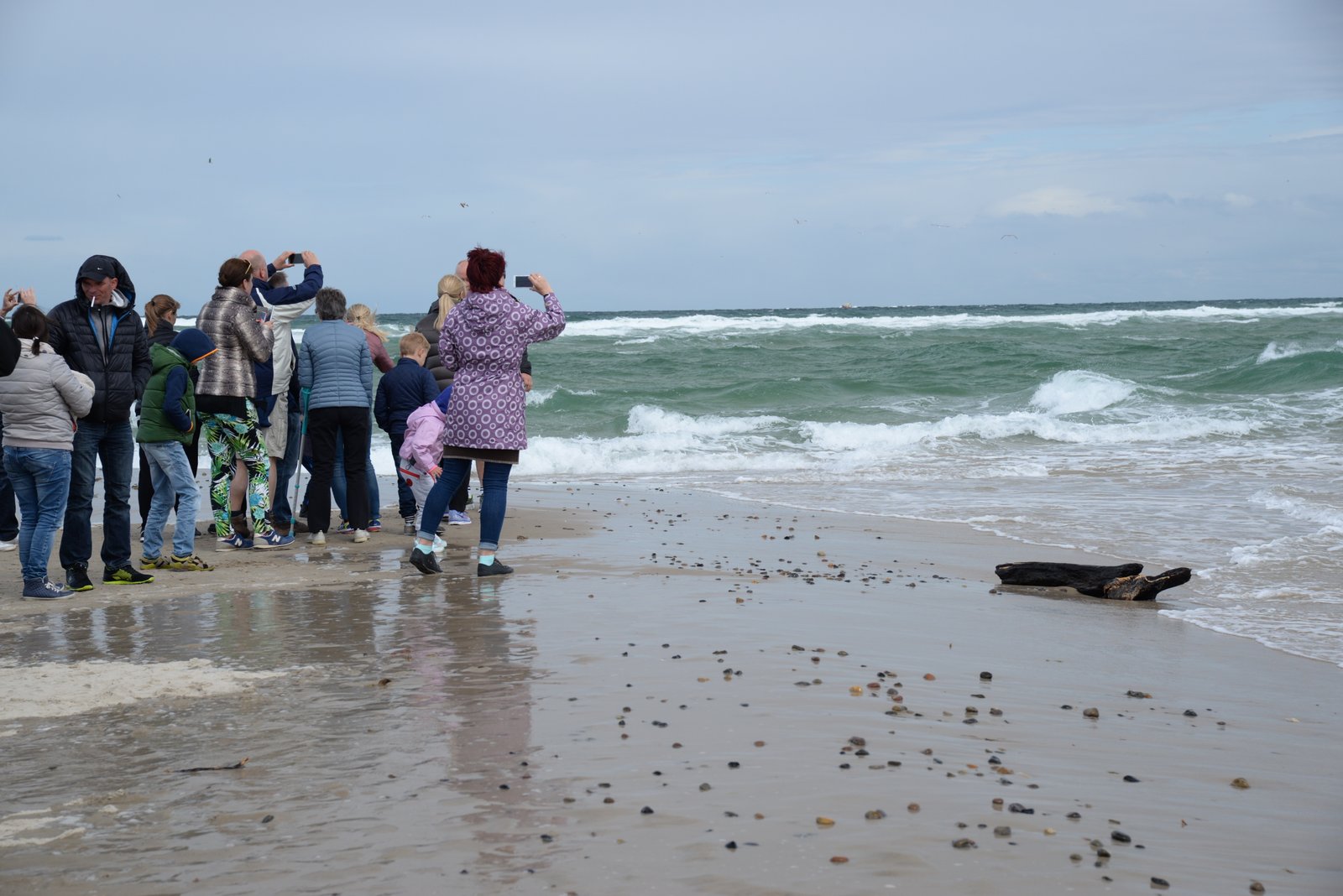

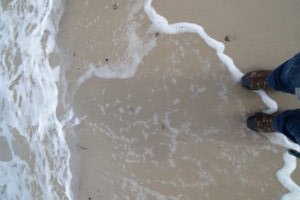
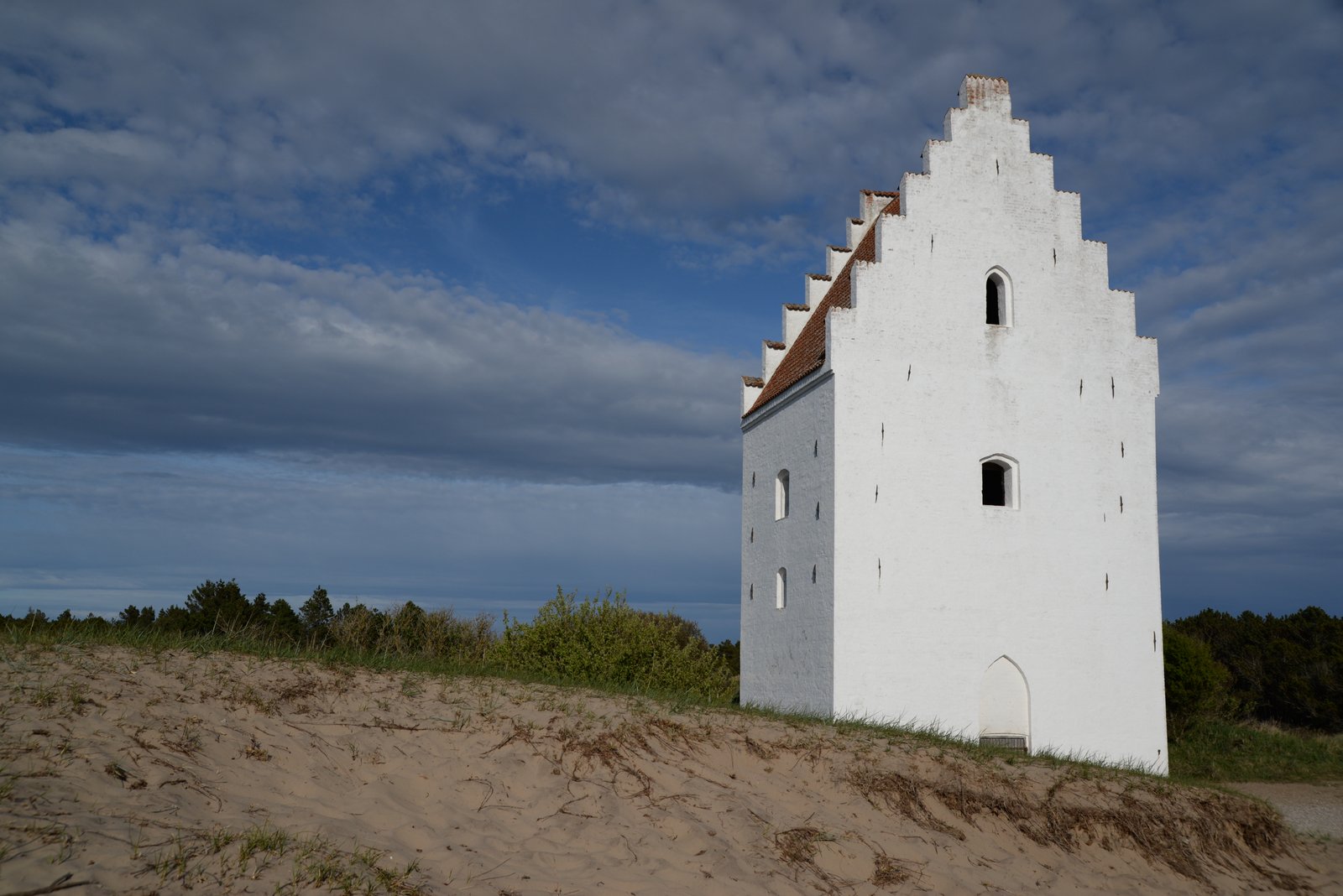


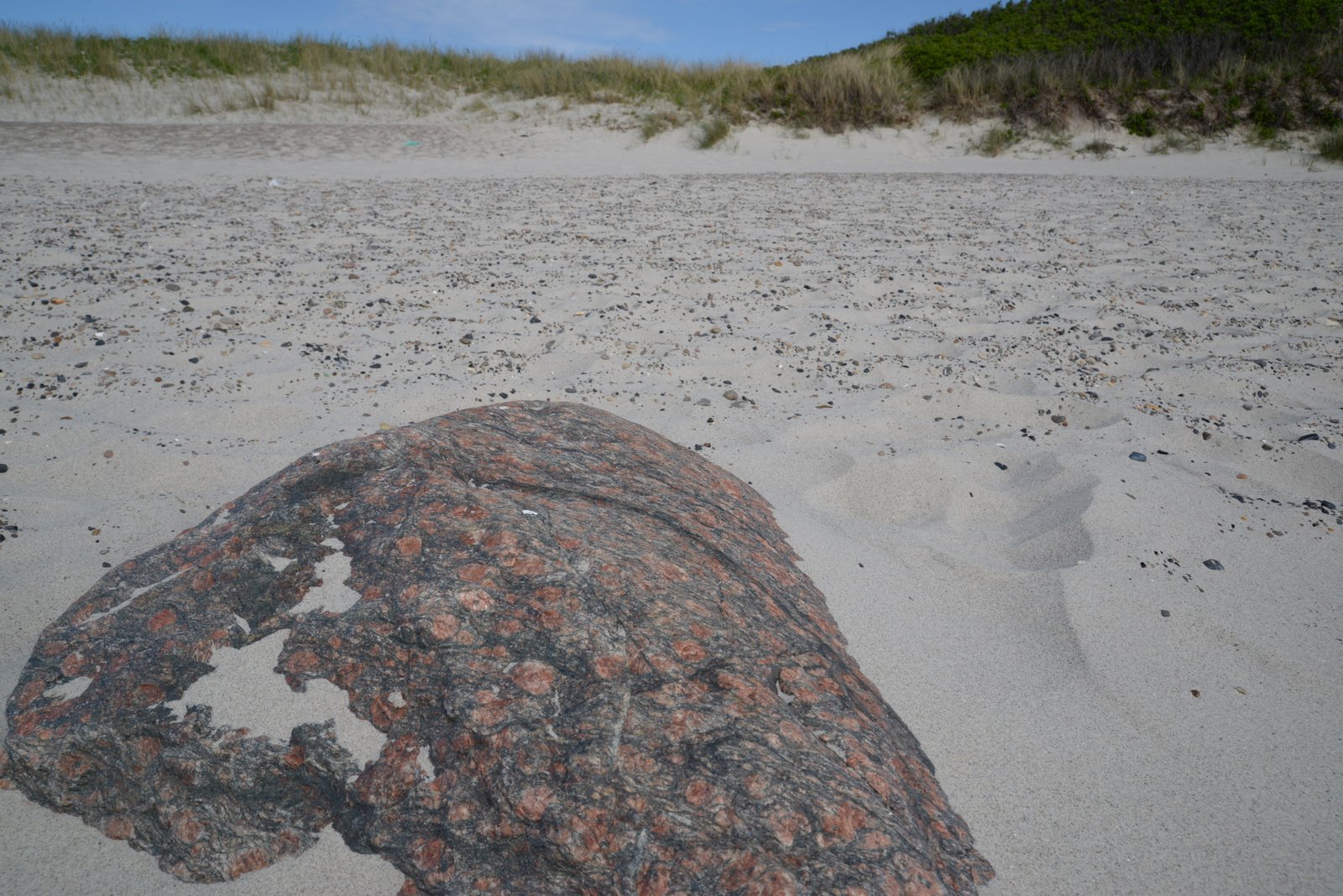



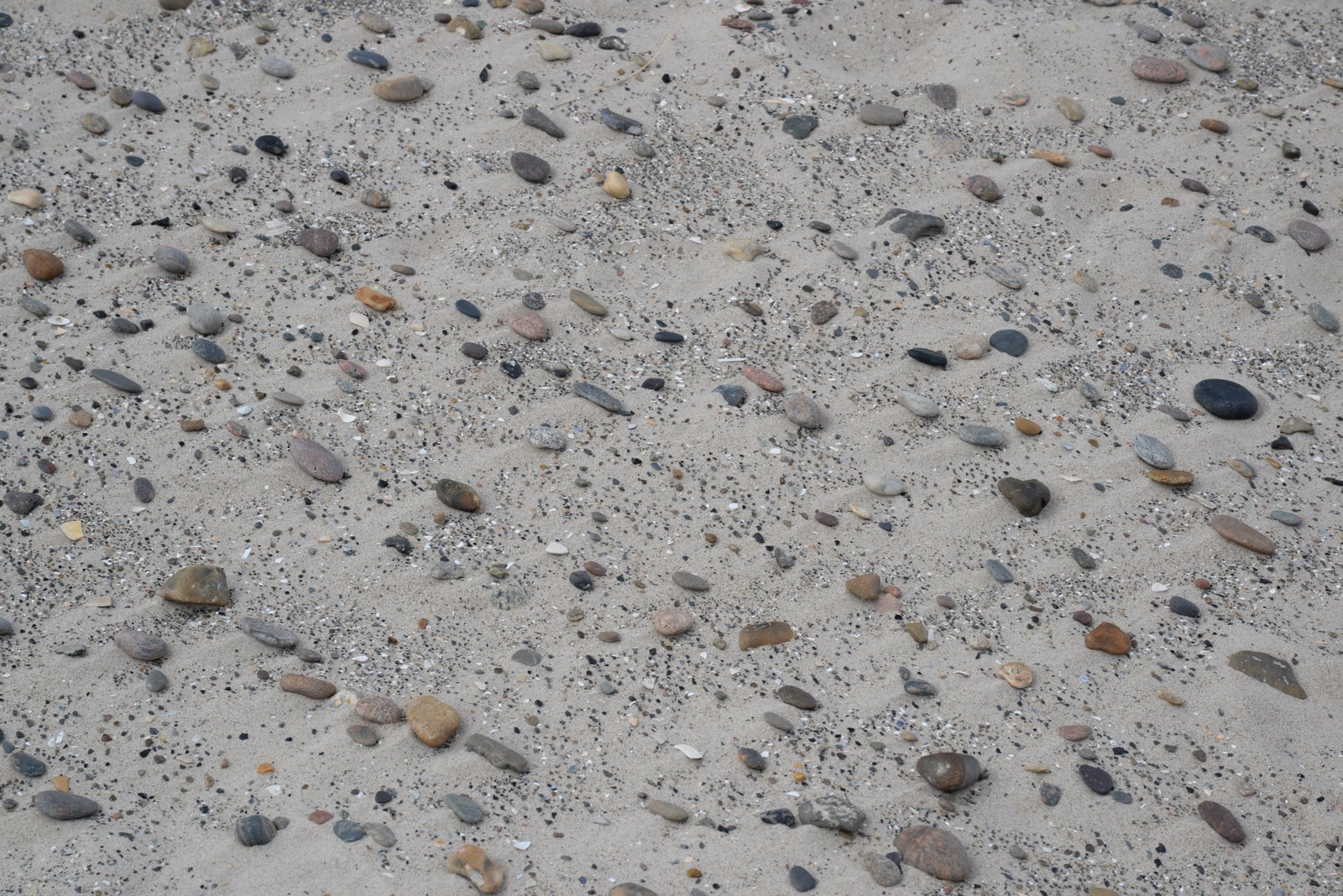
In the photo containing six rocks, with the caption: “Pebbles on the beach: a red, spotted rhomb porphyry in the lower center, and a piece of granite above it.” I was wondering what the rocks above and beneath them were. I found a big chunk of the translucent brown looking one have no idea what it is (bottom most rock in photo).
Hi!
The lowermost rock is a piece of flint, a microcrystalline quartz, colored grey by a bit of organic content. Very common in Denmark. The top may also be a piece of flint, but with a hard white rim of silicified chalk. The big dark chunk on the right looks like a piece of lava, and in case it is likely drifted by ice from somewhere in the north-west Atlantic.